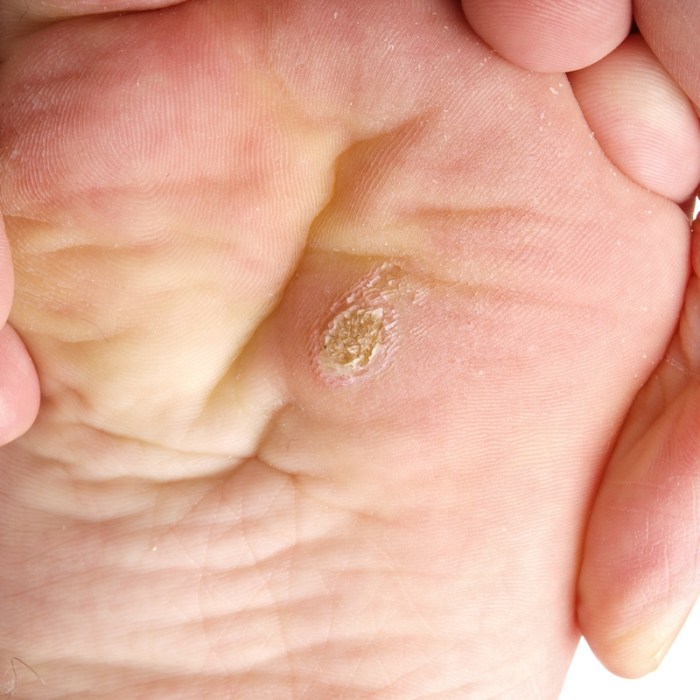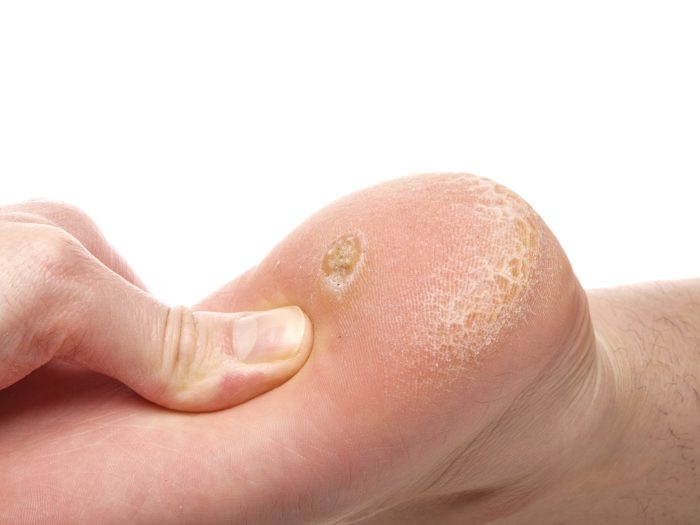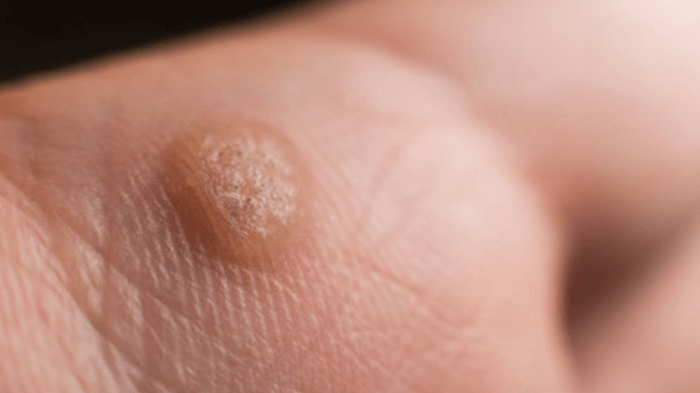What is a verruca milady – Embark on a fascinating exploration of verruca milady, the common wart, and delve into its intriguing medical significance, prevalence, and the myriad of treatment options available. Prepare to be enlightened as we unravel the complexities of this prevalent skin condition.
From its characteristic appearance to the underlying causes and modes of transmission, this comprehensive guide will shed light on the various facets of verruca milady. Discover the factors that influence its development, the diagnostic methods employed, and the preventive measures that can safeguard you from its contagious nature.
Definition of Verruca Milady

Verruca milady, commonly known as plantar warts, are non-cancerous growths on the soles of the feet caused by the human papillomavirus (HPV).
These warts are usually small, round, and have a rough, cauliflower-like surface. They can be painful when pressure is applied to them, making walking or standing uncomfortable.
Causes and Prevalence
Verruca milady is a common skin condition that affects people of all ages, but it is most prevalent in children and young adults.
The virus that causes plantar warts is spread through direct contact with infected skin or contaminated surfaces. The virus can enter the body through small cuts or breaks in the skin on the soles of the feet.
Symptoms and Appearance

Verruca milady typically manifests with the appearance of warts on the skin. These warts are usually small, raised growths that can vary in size, shape, and location. They commonly occur on the hands, feet, and genitals.
Size, Shape, and Location
- Size:Warts caused by verruca milady range in size from a few millimeters to several centimeters in diameter.
- Shape:The warts are typically round or oval in shape, with a slightly raised, cauliflower-like surface.
- Location:Verruca milady warts can appear on any part of the body, but they are most commonly found on the hands, feet, and genitals.
Variations in Symptoms and Appearance
The symptoms and appearance of verruca milady can vary from person to person. Some individuals may experience only a few small warts, while others may develop numerous warts that are larger and more widespread. The location of the warts can also affect their appearance and symptoms.
For example, warts on the feet may be more painful due to the pressure and friction from walking.
Causes and Transmission: What Is A Verruca Milady

Verruca milady is caused by the human papillomavirus (HPV), a common virus that can infect the skin and mucous membranes. There are over 100 different types of HPV, and some types are more likely to cause verruca milady than others.
The virus is spread through direct contact with infected skin or surfaces. This can happen through touching, sharing towels or clothing, or walking barefoot in public areas. The virus can also be spread through sexual contact.
Risk Factors
Certain factors can increase the risk of developing verruca milady, including:
- Having a weakened immune system
- Being in close contact with someone who has verruca milady
- Sharing towels or clothing with someone who has verruca milady
- Walking barefoot in public areas
- Having a history of verruca milady
Diagnosis and Differential Diagnosis

Confirming a diagnosis of verruca milady requires a combination of clinical examination and, in some cases, additional tests or procedures.
During the clinical examination, your doctor will visually inspect the affected area and assess its characteristics, such as size, shape, and color. They may also palpate (feel) the lesion to determine its texture and consistency.
Differential Diagnosis
To distinguish verruca milady from other similar conditions, your doctor may consider the following differential diagnoses:
- Plantar wart:These warts are caused by the human papillomavirus (HPV) and typically appear on the soles of the feet. They are often round or oval, with a rough, cauliflower-like surface.
- Callus:Calluses are thickened areas of skin that develop in response to friction or pressure. They are usually smooth and painless, and they do not have the same raised, cauliflower-like appearance as verrucae milady.
- Corns:Corns are small, hard bumps that develop on the toes or feet. They are caused by friction and pressure, and they can be painful. Corns do not have the same appearance as verrucae milady.
- Tinea pedis (athlete’s foot):This is a fungal infection that can cause itching, redness, and scaling on the feet. Tinea pedis can sometimes resemble verrucae milady, but it typically does not have the same raised, cauliflower-like appearance.
Treatment Options

Verruca milady, like other types of warts, can be effectively treated with various modalities. The choice of treatment depends on factors such as the size, location, and number of warts, as well as the patient’s age and overall health.
Topical Medications
Topical medications are applied directly to the wart. They contain ingredients that either kill the virus or stimulate the immune system to fight it off. Common topical treatments include:
- Salicylic acid
- Imiquimod
- Podophyllotoxin
Topical medications are generally safe and effective, but they may cause skin irritation or allergic reactions in some individuals.
Verruca milady, commonly known as plantar warts, are caused by the human papillomavirus (HPV) and appear as small, rough growths on the soles of the feet. If you’re looking for some practice before your AP Stats Chapter 11 test , be sure to review the material on probability distributions.
But back to verruca milady, these warts can be uncomfortable and even painful, so it’s important to seek treatment if they persist.
Cryotherapy
Cryotherapy involves freezing the wart with liquid nitrogen. This destroys the wart tissue, which eventually falls off. Cryotherapy is a relatively quick and painless procedure, but it may require multiple treatments to be effective.
Laser Therapy
Laser therapy uses a concentrated beam of light to destroy the wart tissue. It is a precise and effective treatment, but it can be more expensive than other options and may cause some discomfort during the procedure.
Surgical Removal
Surgical removal is an option for large or persistent warts that do not respond to other treatments. The wart is surgically excised under local anesthesia. Surgical removal is effective, but it can leave a scar.
Other Treatments
Other treatment options for verruca milady include:
- Cantharidin
- Electrosurgery
- Intralesional immunotherapy
The choice of treatment for verruca milady should be made in consultation with a healthcare professional. The best treatment option will depend on the individual patient and the specific characteristics of the wart.
Prevention and Control

Preventing the spread of verruca milady is crucial for maintaining good skin health. Implementing practical measures can effectively minimize the risk of transmission.
Maintaining proper hygiene practices is paramount. Regularly washing hands with soap and water helps remove the virus from the skin. Avoiding direct contact with infected individuals or surfaces is essential. If contact occurs, disinfecting the affected area promptly can help prevent the spread of the virus.
Protective Gear
Wearing protective gear, such as gloves or socks, can create a barrier between the skin and potential sources of infection. This is particularly important in public areas like swimming pools or gyms, where the risk of exposure to the virus is higher.
Vaccination, What is a verruca milady
Vaccination plays a significant role in preventing or reducing the severity of verruca milady. The human papillomavirus (HPV) vaccine, which protects against certain strains of HPV, has been shown to be effective in preventing the development of plantar warts. Getting vaccinated can significantly reduce the risk of contracting the virus and developing verruca milady.
Clarifying Questions
What causes verruca milady?
Verruca milady is caused by the human papillomavirus (HPV), which enters the skin through tiny cuts or abrasions.
How is verruca milady transmitted?
The virus can be spread through direct contact with an infected person or by touching contaminated surfaces.
What are the symptoms of verruca milady?
Verruca milady typically appears as small, raised bumps on the skin that can be rough or smooth, and sometimes painful.
How is verruca milady treated?
Treatment options include topical medications, cryotherapy, laser therapy, and surgical removal.